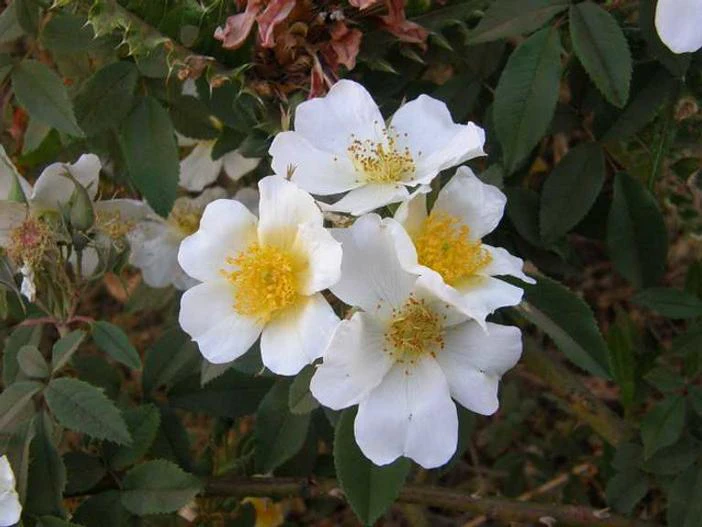Abyssinian Rose
(Rosa abyssinica)
Abyssinian Rose (Rosa abyssinica)
/
/

Malcolm Manners
CC BY 2.0
Image By:
Malcolm Manners
Recorded By:
Copyright:
CC BY 2.0
Copyright Notice:
Photo by: Malcolm Manners | License Type: CC BY 2.0 | License URL: https://creativecommons.org/licenses/by/2.0/ | Uploader: mmmavocado | Publisher: Flickr




























Estimated Native Range
Climate Requirements for Atlanta, Georgia
| This Plant | Your Site | Plant Suitability for Your Location | ||
|---|---|---|---|---|
| • Precipitation | 10" - 49" | 51" | Aquatic | Aquatic |
| • High Temp. | 62°F - 89°F | 89°F | Your summer temperatures are normal for this plant. | Excellent |
| • Low Temp. | 26°F - 50°F | 33°F | Your winter temperatures are normal for this plant | Excellent |
This plant may not grow well at your location - your precipitation is too high.
Summary
Rosa abyssinica, commonly known as the Abyssinian Rose, is an evergreen shrub or small tree that is native to Africa, specifically to highland regions and montane zones. It is found in Ethiopia, Eritrea, Yemen, Saudi Arabia, Somalia, and Sudan. This species can grow up to 23 feet (7 meters) tall and is characterized by its prickly stems and fragrant flowers, which are white to pale yellow and bloom in clusters. The flowering season typically occurs during the rainy season, and the flowers are considered showy due to their fragrance and abundance.
The Abyssinian Rose is valued for its ornamental qualities, including its fragrant flowers and its potential to form dense thickets, making it suitable for use as a living fence in rural villages. It is also used for food and medicine in its native range. In cultivation, it requires well-drained soils, moderate water, and full sun to part shade conditions. While not commonly grown in gardens outside its native range, it can be a unique addition to collections of rare or ethnobotanical plants. Care should be taken as the plant has thorns, which can be a hazard if not managed properly.CC BY-SA 4.0
The Abyssinian Rose is valued for its ornamental qualities, including its fragrant flowers and its potential to form dense thickets, making it suitable for use as a living fence in rural villages. It is also used for food and medicine in its native range. In cultivation, it requires well-drained soils, moderate water, and full sun to part shade conditions. While not commonly grown in gardens outside its native range, it can be a unique addition to collections of rare or ethnobotanical plants. Care should be taken as the plant has thorns, which can be a hazard if not managed properly.CC BY-SA 4.0
Plant Description
- Plant Type: Shrub
- Height: 6-10 feet
- Width: 5-8 feet
- Growth Rate: Moderate
- Flower Color: Cream, White, Yellow
- Flowering Season: Summer
- Leaf Retention: Evergreen
Growth Requirements
- Sun: Full Sun, Part Shade
- Water: Medium
- Drainage: Medium
Common Uses
Bird Garden, Butterfly Garden, Deer Resistant, Fragrant, Low Maintenance, Showy Flowers
Natural Habitat
Native to highland regions and montane zones in Africa
Other Names
Common Names: Ethiopian Rose
Scientific Names: Rosa abyssinica, Rosa abyssinica subsp. microphylla, Rosa abyssinica var. microphylla, Rosa bottaiana, Rosa moschata var. abyssinica, Rosa schimperiana, Rosa schweinfurthii, Rosa sempervirens var. abyssinica
GBIF Accepted Name: Rosa abyssinica